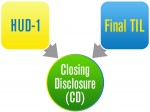Mortgage Rates and The Fed

The Federal Reserve kept the benchmark rate unchanged on September 21st, in a divided vote that alludes to the possibility of a hike before the end of the year.
“The Committee judges that the case for an increase in the federal funds rate has strengthened but decided, for the time being, to wait for further evidence of continued progress toward its objectives,” the Federal Open Market Committee (FOMC) released in statement. “The Committee expects that economic conditions will evolve in a manner that will warrant only gradual increases in the federal funds rate; the federal funds rate is likely to remain, for some time, below levels that are expected to prevail in the longer run.”
“Our decision does not reflect a lack of confidence in the economy,” Fed Chair Janet Yellen said in a press conference, later adding, “We’re generally pleased with how the U.S. economy is doing.”Today’s action was largely expected by analysts as policymakers stood fast this summer, despite initially forecasting four hikes this year. The federal funds rate informs the trajectory of mortgage rates, which remain at historic lows.
Perhaps no sector has benefited more from ultra-low rates than housing, which was devastated by the real estate crash. Home sales are expected to total about 5.7 million this year, up from 5.4 million in 2014 and 4.6 million in 2011. The recovery can at least partly be traced to 30-year fixed mortgage rates that remain below 4%, down from about 6% in 2008, keeping borrowing costs low for buyers.
But today’s housing market is supported by far more than low mortgage rates — namely steady job and economic growth. What’s more, 30-year mortgages are priced off 10-year Treasury note yields, which do rise as short-term rates climb, but not as steeply.
Doug Duncan, chief economist of Fannie Mae, the giant government-sponsored funder of mortgages, expects this week’s Fed hike of a quarter of a percentage point to have virtually no immediate impact on Treasury or mortgage rates, noting markets already have priced in the move. Assuming the Fed raises its rate by a percentage point over the next year, Duncan expects 30-year mortgage rates to drift from 3.9% to 4.1% during the period. That would boost the monthly cost of a typical $225,000 mortgage by $26 to $1,454 — not enough to deter most buyers.
Adjustable-rate mortgages, many of which are modified annually, could increase about twice as rapidly, by about a half a percentage point. Yet as long as job growth and aggregate U.S. incomes increase proportionally, Duncan expects any market impact to be modest. A far bigger restraint on home sales, he says, is a limited supply that should push up prices by nearly 5% both this year and in 2016. As a result, Duncan expects home sales to increase 4% in 2016, down from 8% this year, with higher rates holding back 1% to 2% of deals.
“As long as the rate rise is gradual, I don’t see it as a hugely important factor,” he says.








 Kim N. Bregman
Kim N. Bregman